Main gas pipeline: the nuances of design and construction
Pipeline gas transportation is one of the most economical and efficient ways to deliver blue fuel. Its only significant drawback is the large capital investment in the design and construction.
At first it may seem that the main gas pipeline flies a pretty penny. However, over time, the costs pay off, and small maintenance costs allow the owner to save considerable amounts. You will learn all about the design and construction of a gas supply pipeline system from our article.
The content of the article:
General characteristics of central gas pipelines
The main type gas pipeline is a system of pipes and structures used to deliver fuel from production or production sites to customers. It includes primary and secondary pipes. The diameter of the latter is determined by the characteristics of the transportation object, however, cannot exceed 1420 mm.
Pipelines are divided into three classes depending from pressureunder which the substance is transported. This indicator must be taken into account, since if the norm is exceeded, the probability of an accident increases.
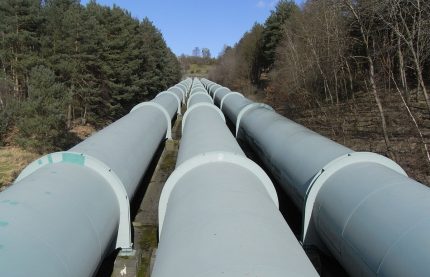
The main gas pipelines are divided into above-ground, underground and underwater. The first due to a small rise does not interfere with the movement of vehicles. This delivery option is used to overcome water obstacles, ravines and other obstacles.
Underground networks are laid in special trenches. The depth of the latter depends on the level of soil freezing. Therefore, when organizing the transportation of wet gas, it is important to take into account the climatic features of the terrain, soil structure, pipe diameter, etc.
And for pipes with drained gas, a trench with a depth of 0.8 m is suitable.Its bottom is covered with a layer of compacted sand, stacked pipes are covered with several layers of bitumen-polymer mastic or polymer shell, then filled with soil.
Underwater systems are created to transport products from marine areas, along the bottom of rivers or large lakes.
The standard pipeline is equipped with main and intermediate compressor stations. Each of them distributes the flow of fuel along branches with projected diameter and reduces its pressure.
For example, gas before it reaches the end consumer passes through the main, then intermediate distribution point. As a result, the pressure decreases to the value provided by the local pipelines.
And to ensure a balanced functioning of the system directly in the consumption area, special storages are created. For example, in summer, gas can accumulate, which is used in the cold season.
The destruction of pipes as a result of their contact with soil, water or air must not be allowed. This problem is solved by external anti-corrosion insulation.
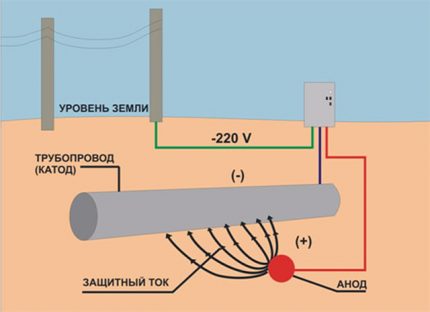
It is important to ensure the reliability of the gas network. It is guaranteed by pumping equipment at compressor stations, the use of high-quality steel pipes, the creation of additional parallel lines that are combined with the main one thanks to jumpers.
Key points in the network
The first is performance. It is calculated taking into account the fuel and energy balance of the areas where transportation will be carried out. Maximum loads are predicted. And also you need to consider that a specific region may develop in the future, so the volume of gas delivered will increase.
To increase productivity gas pipeline looping. If the pipeline operates at medium power, then centrifugal blowers do not particularly affect efficiency. But their role increases with increasing load.
Secondly, automatic adjustment. When designing the network, the control features of the main gas pipelines are analyzed. To do this, determine the stability of the system and discover processes that are not enough for balanced functioning.
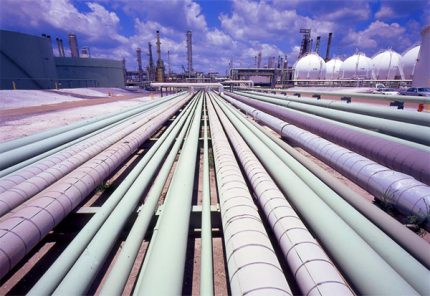
Modern technical means allow you to change performance in an automatic manner. If the necessary equipment is not available, then the speed and efficiency of transportation fall literally to zero.
On the one hand, the movement of matter occurs under the influence of inertia. But on the other hand, the system slows down the movement both due to the rounding of the pipes, and directly due to internal resistance. Given the complexity of the equipment, both factors need an individual approach.
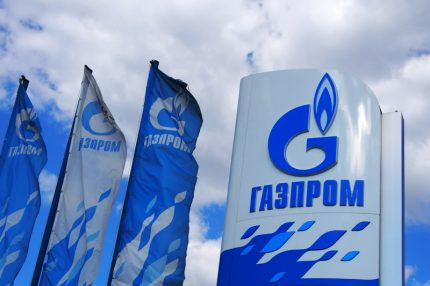
The third key point is designations. Special characters perform information and warning functions. Placing signs is a mandatory rule for using gas pipelines.
Designations allow you to define objects, the zone and the depth of the pipeline. In fact, these are columns with two information blocks. The vertical area indicates the area of special danger, location and other important features.
And horizontal, with information about the location of the hazardous area, set at an angle of up to 30 degrees relative to the surface of the earth. It shows the distance in kilometers along the entire track.
How to design and build a gas pipeline?
From proper design, hydraulic calculation of the gas pipeline and compliance with technological requirements in the construction depends on safety.Therefore, the work must be done consistently and responsibly.
Design Basics
The first and key stage. It provides for the formation of a document system where technical information is displayed. The diameter and working pressure of the pipes are noted here. The number of stations that will be responsible for the transfer is indicated.
The project contains the scheme of the proposed location of the main gas pipeline, the classification of networks depending on pressure. The document notes the location of the central and other regulatory installations.
The project must guarantee:
- continuous transportation;
- the possibility of preventive maintenance;
- maximum comfort and safety for consumers.
In addition to documents of a technical and economic direction, it is also necessary to take into account the nuances of the external environment. The relevant section describes environmental factors, soil structure, features of geographical location, etc.
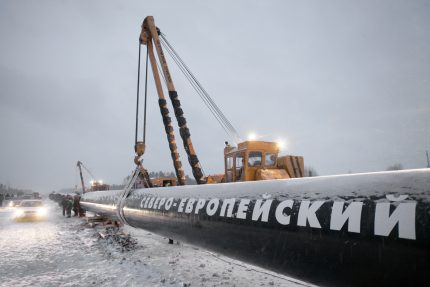
All documentation undergoes rigorous examination by the responsible state authorities. This measure is aimed at preventing possible negative consequences due to errors in the scheme of the main gas pipeline. Specialists may permit, require adjustments, or prevent construction.
A well-formed project is a guarantee of comfort and safety of transportation, minimization of threats to life and health of people, prevention of negative environmental impacts.
Accounting and Compliance
At design of gas supply systems At any level, it is necessary to take into account the limitations of legislative acts, relevant standards and technical recommendations.
In particular, it is strictly forbidden to build pipelines in any settlements, in areas where agricultural work is carried out, in close proximity to airports and railways. There are restrictions on ports and marinas.
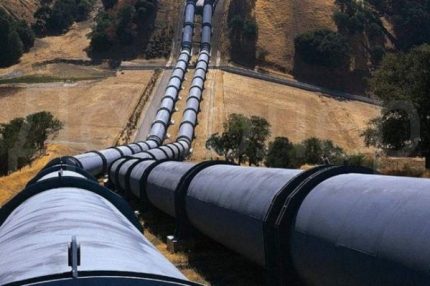
It is also forbidden to combine pipelines, each of which is designed to transport substances with different characteristics. As already mentioned, the main line can branch - additional pipes are connected by jumpers to conveniently carry out repair work.
The depth of underground pipes is determined by the type of substance transported and the level of freezing of the soil in a particular region. The latter is especially true for pumping wet gas.
In most cases, we are talking about dried substance, so the level of deepening of the branches of the pipeline is from 0.8 to 1 meter. But here are their own characteristics. If this section is drained, then the indicator should be more than 1.1 meters. This is due to future soil subsidence.
Pipe transport features
Specialized vehicles equipped with trailers-dissolutions, turnstile skates and fixing equipment are used to transport the pipe rolling. The trailer has a reinforced connection to the vehicle body. And the cabin has a special shield that guarantees the safety of the driver.
Immediately before construction, external pipe quality control is carried out. If the latter have mechanical defects or are damaged by corrosion, then they are not used. Fittings and materials used are also inspected.
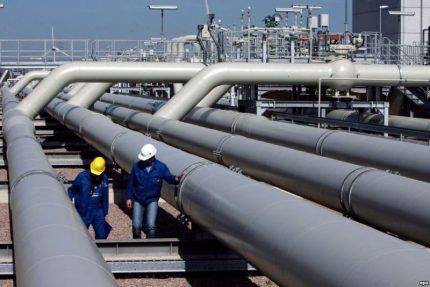
Steel pipes are used for aboveground and underground pipelines. For the second, polyethylene is also relevant. Although steel is universal, but in some respects they are inferior to other options.
For example, polyethylene analogues have a longer service life, increased resistance to destruction and do not require the use of additional materials against corrosion. When arranging the internal networks of the gas pipeline, often along with steel pipes, more expensive copper products are used.
With guidelines for choosing pipes for the construction of gas supply lines next article, which we highly recommend reading.
Subtleties of installing a gas network
First, the inside of the pipes is cleaned. Further, the latter are mounted by experienced professionals. It is necessary not only to prevent the loss of substance, but also to take into account the speed of transportation and the level of pressure.
For installation of the system are used:
- pipe sections;
- semi-bends;
- transitions;
- bends;
- stubs;
- nodes for wells.
The use of these elements allows for the rapid construction of gas pipelines, as well as less significant ones, and to create an airtight structure. In the future, the pipeline is welded: preparatory work, the formation of tight joints, welding in sections and into threads.
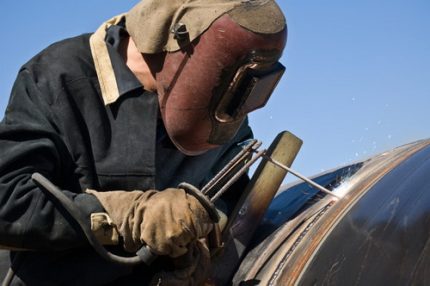
In this case, gas and electric arc, butt contact welding, soldering, etc. are used. Given responsibility, only professionals with a certificate are involved in accordance with RD 03-495.
Welders of the 4th and 5th category work with internal gas pipelines. Welding can be performed both directly in the trench (typical for an underground gas pipeline), and near it.
Ballasting and facility monitoring
To ensure the correct location of the pipeline allows ballasting and fastening. For example, for the underground type, the following methods are used: concreting, filling the soil, hanging reinforced concrete weighting materials and containers. To fix the pipeline, anchor devices are used.
Before putting into use the gas pipeline network, it is mandatory to clean the inner surface of the pipes. The latter are inspected and mechanically acted upon in accordance with the measures envisaged in SNiP 42-01.
The results of gas and electric arc welding must comply with GOST 16037. The representatives of the customer are also entitled to control.
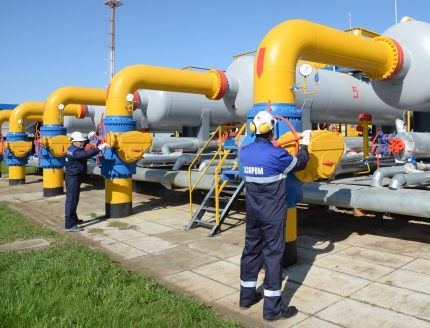
If the pipeline has passed all necessary tests and meets the requirements of legislation, standards and recommendations, then it is put into operation by the customer. First you need to let out air, and then begin to transport the corresponding substance.
Trunk pipeline protection
The central gas network is far from a toy. Therefore, strict rules are established regarding its use. Activities of business entities near the sites where the gas pipeline passes and completed insertion into the gas supply systemlimited. It is necessary to obtain the appropriate permission from local authorities.
The owner must inform the people of the surrounding area at least once a quarter about the location of the pipeline. Use print media, local television or radio.
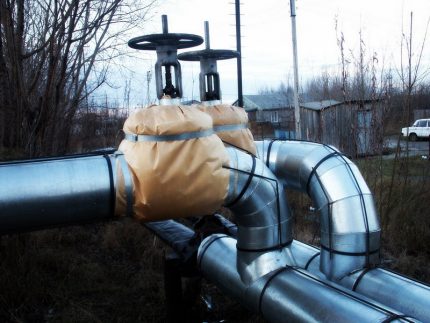
The pipeline is considered an object of increased danger. This is determined both directly by the features of transportation and the serious properties of oil, gas and other substances.
Therefore, in case of destruction of the integrity of the pipe, the following are possible:
- explosion;
- destruction and pollution of the adjacent territory;
- smoke cloud formation;
- fire;
- other negative consequences.
Mandatory is the placement in the immediate vicinity of the pipeline of information signs at a height of 1.5-2 meters from ground level.They should be readable and noticeable, spaced at intervals of 500 meters and at each turn of the track.
The intersection of the highway and the pipeline is undesirable, however, in some cases it cannot be avoided. In such areas signs are placed prohibiting cars from parking.
The basic rules and nuances of connecting a private house to the main gas supply system are given in article, the content of which we recommend to read.
Conclusions and useful video on the topic
Video # 1. In detail about the nuances of designing pipelines of paramount importance:
Video # 2. Construction of a central gas network:
Video # 3. Corrosion protection of pipelines:
The main pipeline is an object of increased danger. During the construction, it is necessary to take into account the requirements of regulatory enactments and involve exclusively specialists with relevant certificates.
In the future, you must clearly comply with the requirements of the operation of the facility. Then it will be a stable source of income for the owner and will provide end consumers with gas, oil and other transportation products.
Please leave comments in the block below. Share useful information on the topic of the article, which is useful to site visitors. Ask questions about controversial issues, post interesting photos.

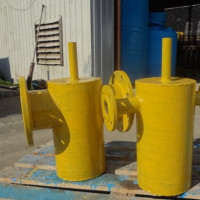 Gas condensate collectors on the gas pipeline: structure and purpose of the condensate collector + nuances of installation and maintenance
Gas condensate collectors on the gas pipeline: structure and purpose of the condensate collector + nuances of installation and maintenance 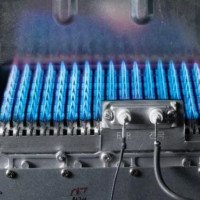 The device of the gas burner, the features of starting and setting the flame + the nuances of disassembly and storage
The device of the gas burner, the features of starting and setting the flame + the nuances of disassembly and storage 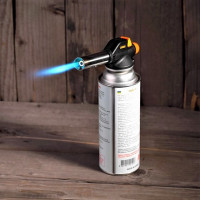 Gas burners for spray can: varieties and principle of operation + nuances of choice and use
Gas burners for spray can: varieties and principle of operation + nuances of choice and use 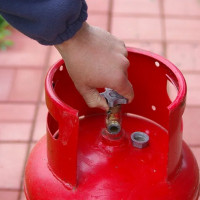 How to drain condensate from a household gas cylinder: the nuances of condensation formation + instructions for draining
How to drain condensate from a household gas cylinder: the nuances of condensation formation + instructions for draining 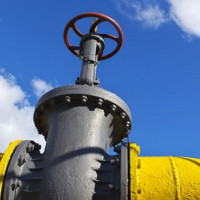 Gas pipes: a comparative overview of all types of gas pipes + how to choose the best option
Gas pipes: a comparative overview of all types of gas pipes + how to choose the best option 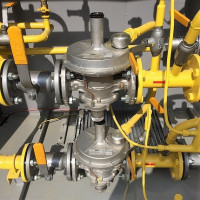 Gas pressure relief valve: types of devices + selection guidelines
Gas pressure relief valve: types of devices + selection guidelines  How much does it cost to connect gas to a private house: the price of organizing gas supply
How much does it cost to connect gas to a private house: the price of organizing gas supply  The best washing machines with dryer: model rating and customer tips
The best washing machines with dryer: model rating and customer tips  What is the color temperature of light and the nuances of choosing the temperature of the lamps to suit your needs
What is the color temperature of light and the nuances of choosing the temperature of the lamps to suit your needs  Replacement of a geyser in an apartment: replacement paperwork + basic norms and requirements
Replacement of a geyser in an apartment: replacement paperwork + basic norms and requirements
Information about the rules by which the main gas pipeline is laid will be useful to ordinary people who plan to crash into it and receive gas. That's just often the gas workers themselves spit on their own rules and lay aside.